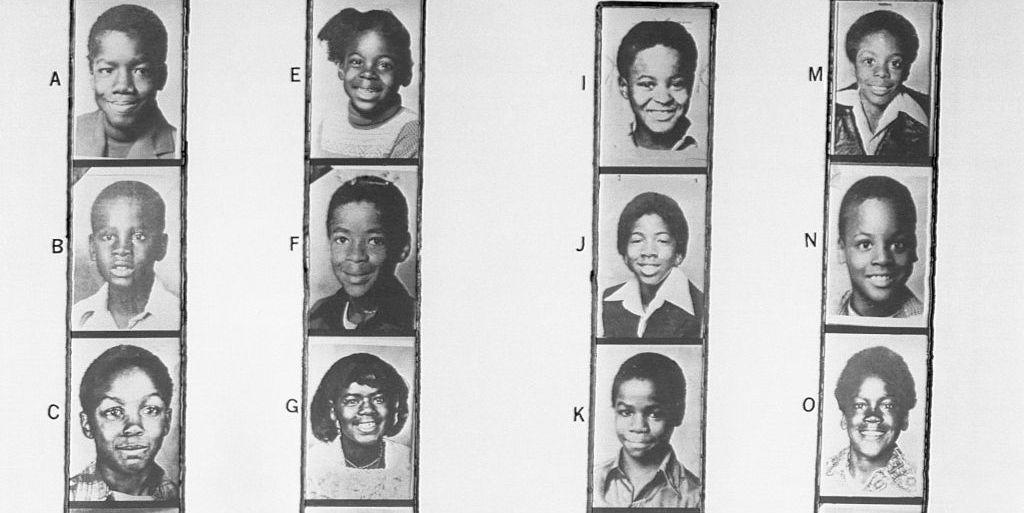Atlanta's Mayor Re-Examines the Child Murders That Terrorized the City 40 Years Ago

Between 1979 and 1981, at least 30 children and young people were murdered in a series of crimes that terrorized Atlanta. But these killings of black children, who often came from low-income families, never lodged themselves in the American psyche the way that near-contemporaneous murders by the likes of Ted Bundy and Richard Ramirez did. Now, as HBO airs the documentary series Atlanta’s Missing and Murdered: The Lost Children, the city is re-examining evidence in the case, and creating a permanent memorial to its children.
No one has ever been charged with the murders of the children, who were mostly black boys between the ages of 7 and 17. They included Curtis Walker, a 13-year-old who disappeared after heading to a local grocery store in hopes of earning money by helping the elderly carry their bags. The next time his mother, Catherine Leach, saw her son, his body was being pulled out of the South River on a televised news broadcast. Another victim, 10-year-old Earl Terrell, was kidnapped and later murdered while making his way home from a local swimming pool in the summer of 1980.
Wayne B. Williams, a 23-year-old from a respected middle-class black Atlanta family, was first arrested in 1981. Police officers staking out the James Jackson Parkway Bridge reported hearing a loud splash, and subsequently pulled over Williams’s car after it left the bridge. Two days later, the body of 27-year-old Nathaniel Cater was pulled from the water. Investigators connected Williams, a freelance photographer and self-employed talent scout, to nine of the other slayings through fiber and hair evidence that matched a carpet in his home and his family’s German Shepherd. But he was only tried for the murders of Cater and another adult victim, 21-year-old Jimmy Ray Payne.

Atlanta Mayor Keisha Lance Bottoms was nine years old when the murders began, and is a member of a generation of Atlanta children who lived in fear of the “snatcher.”
“You saw it on television, you heard your parents talking about it, you saw their pictures,” Bottoms told Esquire.
But questions have lingered despite Williams’s conviction. Many, including the family members of some of the victims, believe that Williams is innocent, that he killed only the adults, or that he murdered some, but not all, of the children. The original investigation took place in a city still deeply marred by racism, forcing families to push back against narratives that depicted the victims as “street kids.” Some believe the killings were the work of the Klan, which counted at least 10,000 members in 1981. When James Baldwin visited the city to report on the murders in 1981, he mocked the idea that Atlanta then represented a progressive “New South,” writing, “Lord. The New South. Do not come down here looking for it.” Williams, still serving his two life terms, maintains his innocence, despite being connected to the murder of one child by DNA evidence in 2010.

Last year, Bottoms established the Atlanta Children’s Memorial Taskforce, a committee charged with creating a memorial for the murdered children. Among its members are Curtis Walker’s mother and Earl Terrell’s brother. In January, the mayor’s office debuted an art exhibition featuring work from local artists in honor of the victims. Portraits of the children painted by artist Dwayne Mitchelle will be exhibited at the Hartsfield-JAckson International Airport this spring.
The feeling of seeing the victims’ portraits was “difficult to put into words,” said Bottoms. “It humanizes these children. I don’t know if they’ve ever had the benefit of being brought to life in this way. It’s an important experience for all of us, because for so many of these families, they felt as if their children had been forgotten, and it allowed us to see them again.”
Bottoms also announced last year that authorities would be retesting evidence connected to the crimes. “We know technology has improved and changed in so many ways,” she said. “We don’t know if there will be any additional information or any additional evidence that will lead us in one direction or another.”

Bottoms noted that she’d like to “manage expectations” as to the results of the inquiry, in the event that the renewed investigation doesn’t reveal major developments. But having fresh eyes on the evidence may yield new information, through investigative work that can be as simple as comparing evidence sheets with photos of the victims. “One evidence sheet was very descriptive, but it didn’t mention that the body had a gold chain on it,” said Bottoms. “Things like that may have been missed 40 plus years ago.”
The task force is also still at work on a permanent memorial. The planned monument will include an eternal flame and a still-to-be-determined artwork honoring the victims’ lives. The memorial will be installed at City Hall, and visible from the mayor’s office window. “It will be this very physical reminder for me, and every mayor who comes in after me,” said Bottoms, “that our children matter.”
You Might Also Like